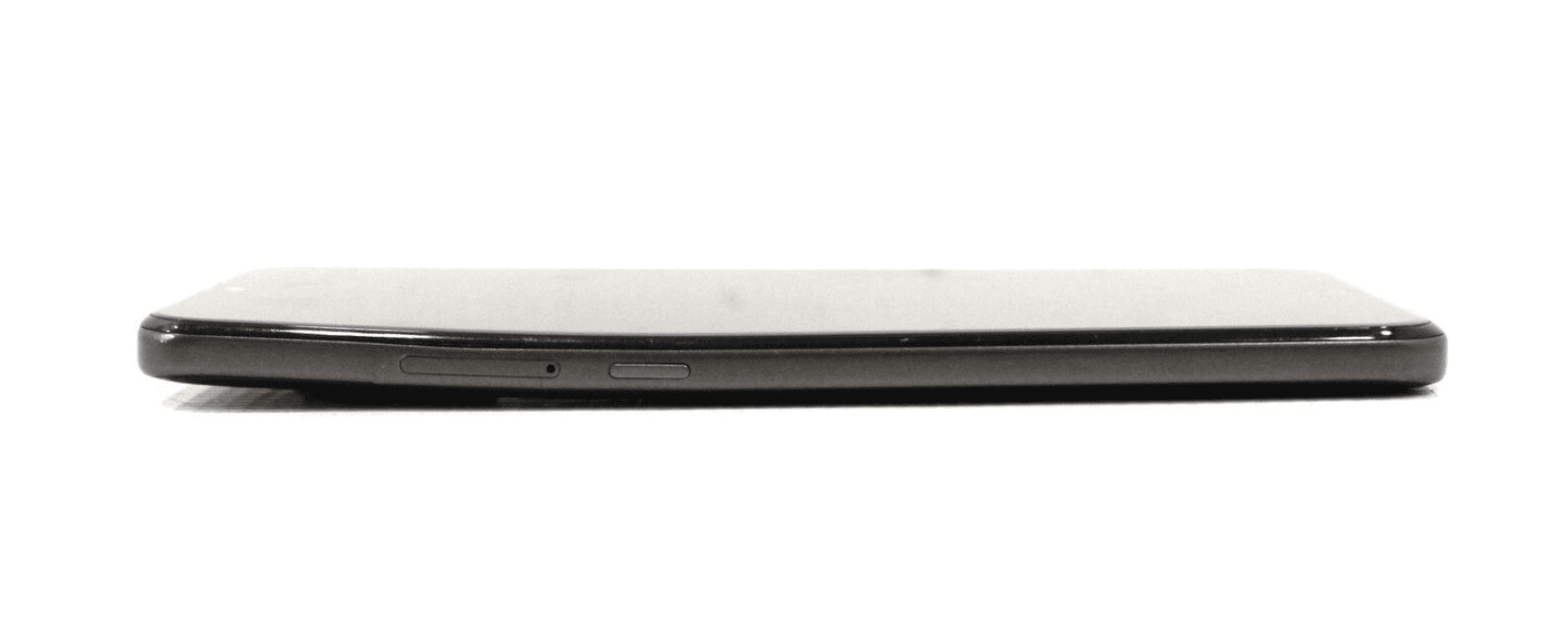Bent phones pose a common problem for many users. A warped frame or distorted screen can result from drops or pressure. While damage looks severe, repair may be possible in some cases. Depending on the extent of damage, a bent phone can often be repaired by replacing components like the screen, frame, or battery.
Professional repair shops have tools to assess internal damage and straighten frames. They can determine if critical parts like the motherboard remain intact. DIY repair is risky and may void warranties. Costs vary based on parts needed and labor involved.
Repairability differs between phone models. Some have easily removable batteries and screens. Others use strong adhesives that complicate repairs. Checking repairability scores can help gauge repair difficulty before purchase. Ultimately, repair feasibility depends on damage severity and phone design.
| Repair Option | Pros | Cons |
|---|---|---|
| Professional | Expertise, proper tools | Higher cost |
| DIY | Lower cost | Risk of further damage |
| Replacement | New device | Most expensive |
Bent Phone? Don’t Despair: Exploring Your Repair Options
Discovering a bend in your once-pristine phone can be disheartening. But before you resign yourself to a costly replacement, take a deep breath and explore the repair options available.
Assessing the Damage
The repairability of a bent phone depends on the severity of the damage:
- Slight bend: If the bend is minor and doesn’t affect functionality, you might be able to live with it or attempt a DIY fix (with caution!).
- Moderate bend: If the bend is more noticeable and affects the screen, buttons, or ports, professional repair is likely necessary.
- Severe bend: If the bend is significant, causing cracks, screen damage, or internal component damage, repair might be complex and costly, or even impossible.
DIY Repair: Proceed with Caution!
For minor bends, you might attempt a DIY fix, but proceed with extreme caution:
- Gentle pressure: Apply gentle pressure in the opposite direction of the bend. Avoid excessive force, which could worsen the damage.
- Use tools carefully: If using tools like suction cups or a vise, be extremely careful not to damage the screen or other components.
- Risks involved: DIY repairs can void your warranty and potentially cause further damage.
Professional Repair Options
- Manufacturer repair: Contact your phone’s manufacturer or authorized service provider. They might offer repair services, but costs can vary depending on the damage and warranty coverage.
- Third-party repair shops: Local repair shops often offer more affordable repairs than the manufacturer. Research reputable shops with experienced technicians.
- Online repair services: Some online services offer mail-in repairs, which can be convenient but might take longer.
Factors to Consider
- Cost of repair: Get quotes from multiple repair providers to compare costs.
- Warranty coverage: Check if your phone is still under warranty. DIY repairs or third-party repairs might void your warranty.
- Data backup: Back up your phone’s data before sending it for repair, as data loss can sometimes occur during the process.
- Turnaround time: Consider how long you can be without your phone and choose a repair option with a reasonable turnaround time.
Preventing Future Bends
- Protective case: Use a sturdy phone case to provide extra protection against drops and impacts.
- Avoid sitting on your phone: Don’t keep your phone in your back pocket or sit on it, as this can lead to bending.
- Careful handling: Handle your phone with care and avoid placing it in situations where it could bend.
When to Replace
Sometimes, replacing your phone might be the more sensible option:
- Extensive damage: If the repair costs exceed the value of the phone or the damage is too severe to repair reliably.
- Outdated phone: If your phone is old and nearing the end of its lifespan, it might be a good opportunity to upgrade.
- Insurance claims: If you have phone insurance, check if your policy covers accidental damage or bending.
By carefully assessing the damage, exploring repair options, and taking preventative measures, you can make an informed decision about the fate of your bent phone.
The Complexity of Mobile Phone Repair
Mobile phone repair involves intricate processes and specialized knowledge. Technicians face challenges due to compact designs and delicate components.
Understanding Repair Processes
Repairing a bent phone requires careful assessment and precision. Technicians first examine the extent of damage to the frame and internal parts. They use specialized tools to gently straighten metal frames without causing further harm.
For severe bends, repairs may involve:
- Disassembling the device
- Replacing damaged components
- Realigning internal connections
Screen repairs on bent phones often need extra care. Technicians must ensure proper fit and function after straightening the frame.
The cost to repair a bent phone typically ranges from $50 to $200. This varies based on damage severity and phone model.
Factors Affecting Repairability
Several factors influence a bent phone’s repairability:
- Phone design
- Materials used
- Extent of damage
- Availability of parts
Modern smartphones pose unique challenges. Many use strong adhesives and non-standard screws. This can make accessing internal components difficult.
Waterproofing features add complexity to repairs. Technicians must maintain these seals during the repair process.
Some manufacturers have improved repairability in recent models. They use modular designs and easily accessible components.
| Factor | Impact on Repairability |
|---|---|
| Design | Complex designs increase repair difficulty |
| Materials | Premium materials may be harder to work with |
| Damage Extent | Severe bends are more challenging to fix |
| Parts Availability | Limited parts can hinder repairs |
Technical Capacities in Bent Phone Repair
Repairing bent phones requires specialized skills and equipment. Technicians must accurately evaluate damage and use precise tools to restore device functionality.
Assessing Structural Damage
Technicians use visual inspection and diagnostic tools to assess bent phone damage. They check for:
• Frame warping
• Screen distortion
• Component misalignment
X-ray imaging reveals internal issues. Specialized software tests sensor and circuit functionality.
Bend severity affects repair feasibility. Minor warping may be fixable. Severe bends often require part replacement.
Technicians evaluate:
| Area | Inspection Method |
|---|---|
| Frame | Visual, measurement tools |
| Screen | Touch response tests |
| Internals | X-ray, circuit analysis |
Accurate assessment determines the best repair approach.
Technological Tools and Expertise
Advanced tools enable precise bent phone repairs:
• Frame straightening jigs
• Heating pads for controlled reshaping
• Micro-soldering stations
• Ultrasonic cleaners
Repair costs vary based on damage severity and phone model. Newer devices often need pricier parts.
Technicians require extensive training in:
• Phone architecture
• Delicate component handling
• Adhesive removal and reapplication
Specialized skills minimize further damage during repairs. Expert technicians can often restore bent phones to full functionality.
Warranty and Compliance Considerations
Warranty coverage and repair eligibility play a crucial role when dealing with bent phones. Regulations and standards also impact the repair process for damaged devices.
Warranty and Repair Eligibility
Most phone warranties don’t cover accidental damage like bending. However, some manufacturers offer extended warranties or protection plans that may include such incidents. Apple’s AppleCare+ and Samsung’s Samsung Care+ are examples of plans that might cover accidental damage repairs.
Always check the warranty terms before attempting repairs. Unauthorized repairs often void warranties. Some companies allow third-party repairs without voiding coverage. This varies by manufacturer and model.
Insurance policies sometimes cover bent phone repairs. Review your policy details or contact your provider to confirm coverage. Keep in mind that deductibles may apply.
Regulations and Standards in Repair Services
Repair services must adhere to various regulations and standards. These ensure quality, safety, and consumer protection. The Federal Trade Commission (FTC) enforces rules against deceptive repair practices.
Many countries have “right to repair” laws. These aim to make repairs more accessible and affordable. They require manufacturers to provide repair information and parts to independent shops.
Industry standards like ISO 9001 guide repair processes. They help ensure consistent quality across service providers. Certified technicians often follow manufacturer-specific repair protocols.
| Authority | Role in Phone Repairs |
|---|---|
| FTC | Enforces consumer protection |
| ISO | Sets quality standards |
| Local Gov | Implements right to repair laws |
Consumers should choose repair services that comply with these standards. This helps protect their devices and personal data during the repair process.
Additional Services and Support Systems
Modern repair services extend beyond fixing bent phones. They integrate efficient processes and responsive communication to enhance customer satisfaction.
Enhancing Repair Service Efficiency
Repair shops now use advanced tools to boost precision and speed. Many adopt digital inventory systems to track parts. This cuts wait times for customers.
Some shops offer quick diagnostics. Technicians use specialized software to pinpoint issues fast. This helps them give accurate repair estimates.
Shops also focus on staff training. Skilled technicians can handle complex repairs better. This improves success rates and reduces errors.
| Service | Benefit |
|---|---|
| Quick diagnostics | Faster repair estimates |
| Digital inventory | Reduced wait times |
| Staff training | Higher success rates |
Communication and Customer Support
Repair shops now use various channels to keep customers informed. Many offer real-time updates via text or email. This keeps clients in the loop about repair progress.
Some shops provide online portals. Customers can check repair status anytime. This reduces calls to the shop and improves efficiency.
Live chat support is becoming common. It allows quick answers to customer questions. This can help resolve simple issues without a shop visit.
Shops also focus on clear explanations. They break down complex repairs into simple terms. This helps customers understand the work done on their devices.
Frequently Asked Questions
Bent phones pose unique challenges for repair and safety. Common concerns include repair costs, fixing methods, and long-term impacts on device functionality.
Is it safe to use a phone that has been bent?
Using a bent phone can be risky. Damage to internal components may cause malfunctions or safety hazards. It’s best to have a professional assess the device before continued use.
What are the typical repair costs associated with a bent mobile phone?
Repair costs for bent phones vary based on model and damage extent. Simple bends may cost less, while severe damage requiring part replacements can be pricier. Newer models often incur higher repair fees.
What methods are commonly used to fix a bent phone?
Technicians may use specialized tools to straighten frames. Some DIY techniques involve careful pressure application. Severe cases might need part replacements.
Are there any risks of explosion when using a phone that is bent?
Bent phones can pose explosion risks if the battery is damaged. Lithium-ion batteries may become unstable when bent or punctured. Professional inspection is crucial to assess this danger.
What are the repair options for bent iPhones and Android devices?
Both iPhone and Android repairs often involve frame straightening or replacement. Apple offers official repair services for iPhones. Many third-party shops handle Android devices. Some manufacturers provide specific bent phone repair programs.
What factors contribute to a cell phone bending over time?
Phones may bend due to:
- Prolonged pressure in tight pockets
- Accidental drops or impacts
- Heat exposure
- Poor quality materials in some budget devices
Regular protective cases can help prevent gradual bending.
| Factor | Prevention Method |
|---|---|
| Pressure | Use looser pockets or bags |
| Impacts | Apply screen protector and case |
| Heat | Avoid leaving phone in hot cars |
| Material quality | Choose reputable brands |






